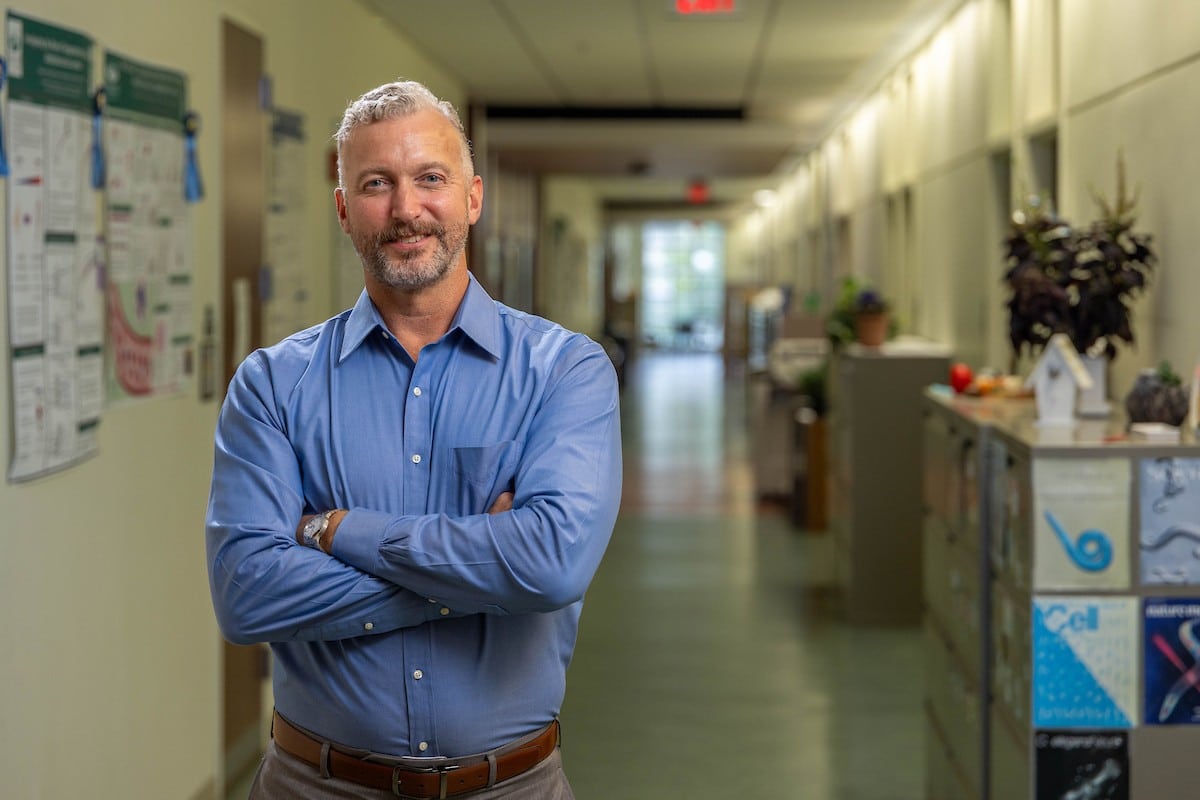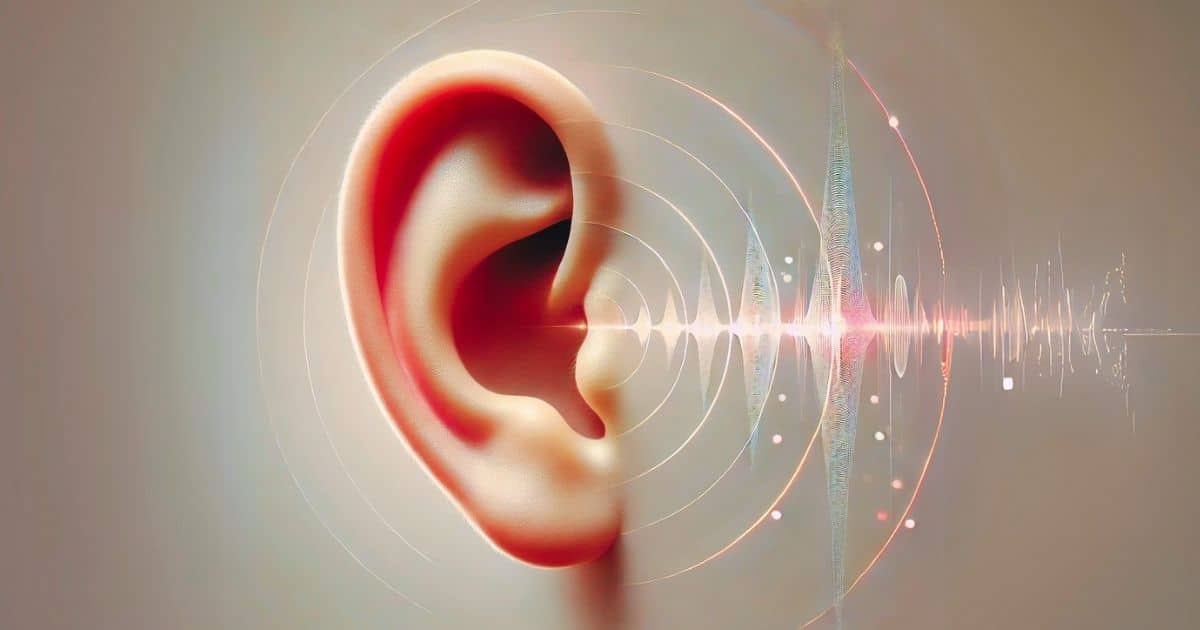ATHENS, OHIO – Ohio University College of Arts and Sciences Professor Dr. Mitchell Day has been awarded a significant grant of $453,000 from the National Institutes of Health (NIH) to explore the neurobiological mechanisms behind hearing loss and its impact on sound localization.
This innovative research aims to shed light on how hearing loss affects auditory perception, particularly in complex environments.
Understanding Sound Localization and Hearing Loss
The research explores the neural basis of difficulties in pinpointing sound locations, aiming to identify where auditory processing issues arise in the brain.
“When individuals lose their hearing, they often rely on hearing aids, which amplify sounds but do not address changes in the inner ear and the brain’s auditory processing areas. A lot of times, people with hearing aids can hear everything, let’s say in a crowded restaurant, however, the problem comes from the difficulty in segregating sounds based on where they are coming from. Our research seeks to investigate these changes and their implications for sound perception.”
–Mitchell Day, PhD
Dr. Day explains that people with normal hearing can pinpoint the specific locations of where a sound is coming from, whereas people with hearing impairments have a hard time pinpointing the exact location of specific sounds.
Addressing a Widespread Issue
With hearing loss affecting millions globally, this study will utilize advanced techniques to investigate its impacts on auditory perception. According to the World Health Organization, more than 700 million people (1 in every 10) will experience disabling hearing loss by 2050.
To help mitigate the impacts of hearing loss, this NIH grant will fund a three-year study that utilizes an animal model to examine how hearing impairment alters auditory processing in the brain. “Currently, we don’t know why individuals have this impairment with hearing loss. So as a neuroscientist, I’m investigating this with animal models so we can look at neural functions that are similar to that of a human’s brain,” Dr. Day said. “We’re using rabbits because they’re mammals, so they have similar auditory circuitry to humans and also have a frequency range that largely overlaps with humans.”

Innovative Techniques to Study Neural Activity
The research specifically targets the inferior colliculus, a critical area in the midbrain for processing information on sound location. By implanting microelectrodes into this region of the rabbit’s brain, researchers can record activity from individual neurons while the animals listen to sounds from various locations. This will help determine how hearing impairment affects the brain’s ability to encode sound source location.
According to Dr. Day, neurons communicate by sending brief, large electrical impulses known as action potentials. All sensory information is encoded in the rate at which these action potentials fire.
“We can determine if a neuron encodes information about a sound source’s location by recording from a neuron in the inferior colliculus and measuring its firing rate in response to a sound source. If we move the sound source to different locations and observe a change in the firing rate, this suggests the neuron is sensitive to sound source location, meaning the firing rate encodes that information.”
Collaborative Efforts Across Disciplines
In addition to Dr. Day’s work, this research is supported by co-investigators Dr. Soichi Tanda from the Department of Biological Sciences and Dr. Mark Berryman from Biomedical Sciences in the Heritage College of Osteopathic Medicine. They will focus on examining cochlear tissue to assess any damage to hair cells caused by noise exposure, providing valuable insights into the anatomical aspects of hearing loss.
“Understanding how exposure to acute or chronic loud noises causes physical damage to the inner ear and compromises processing of sound signals by the brain will heighten awareness of the long-term consequences of noise-related hearing loss and ways to prevent permanent damage to one of our crucial special senses”
–Mark Berryman, PhD
Graduate student Olivia Barnes is also contributing to the project by studying the effects of noise-induced hearing loss on the inferior colliculus. The research team aims to integrate undergraduate students into the project, fostering educational opportunities in biomedical research as part of the NIH grant’s broader goals.
Pioneering Research for Future Interventions
While the research has a foundational scientific focus, its implications are clinically relevant. By identifying the specific neural changes associated with hearing loss, the team hopes to pave the way for developing better interventions and treatments.
“This is just the beginning,” Dr. Day said. “Once we can pinpoint the neural basis of sound localization deficits, we can explore why these changes occur and how we might address them. We are creating the foundational research needed to ultimately find a solution to help.”
The grant was officially funded in September, and although preliminary work began earlier, the team is eager to gather data and expand their research efforts in the coming months and years.
“Hearing loss is one of the most personally, socially, and economically relevant problems for all people and all ages, and it presents itself in many different forms and levels of severity,” Dr. Berryman added. “While there are many known causes of hearing loss, including genetic factors, use of certain antibiotics to treat ear infections in children, exposure to loud environmental noises, chemotherapy, aging, etc., the underlying cause-effect relationships are only just beginning to be understood.”
About Ohio University
Ohio University strives to be the best student-centered, transformative learning community in America, where students realize their promise, faculty advance knowledge, staff achieve excellence, and alumni become global leaders. OHIO is committed to fostering, embracing, and celebrating diversity in all its forms. Our Athens Campus offers students a residential learning experience in one of the nation’s most picturesque academic settings. Additional campuses and centers serve students across the state, and online programs further advance the University’s commitment to providing educational access and opportunity. Ohio University is a Carnegie R1-classified research-intensive institution with a record of advancing knowledge through discovery and innovation in the natural and biomedical sciences, humanities and arts, and engineering. Visit www.ohio.edu for more information.
Source: Ohio U






